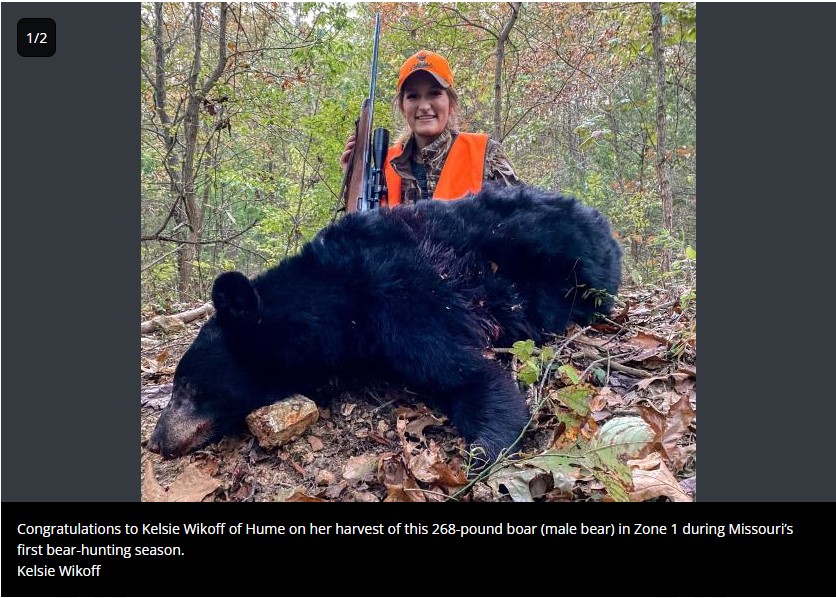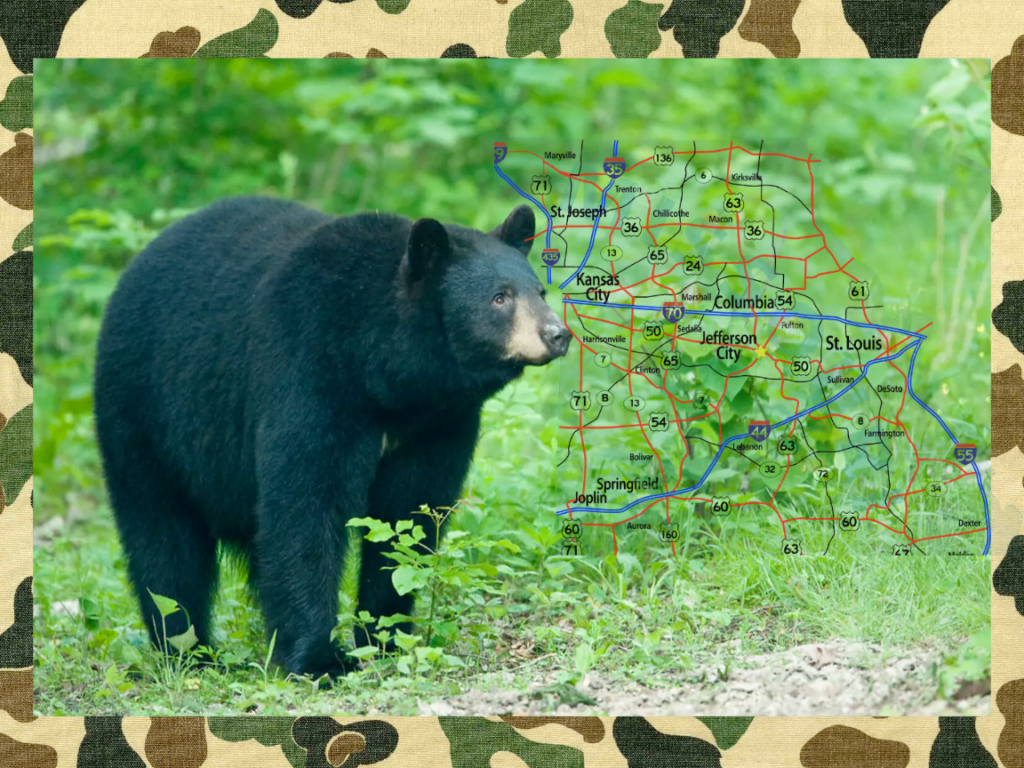Field Update: Missouri Black Bears
Because of hunters who generously donated to SCI Foundation in recent years, we’ve worked with Missouri’s Department of Conservation since 2010 to help with a decade’s long population estimation study. We’re glad to report this resulted in a new hunting opportunity (because a huntable population is a healthy and sustainable one). 2021 was the first year in Missouri’s history they have ever held a regulated black bear hunt. That opportunity continued this year and is expected to in future.
Because of hunters who care enough about wildlife to help donate toward conservation work, this is one example showing there are more wildlife, and more opportunities to hunt them, because of hunters valuing and investing in a resource. THANK YOU to donors of SCI Foundation for your long-term vision and philanthropy, and great work to the Missouri Department of Conservation!

As with any hunting opportunity these days, especially new hunts opening, outcry from anti-hunters has been small but loud. This continues to be a serious threat to hunters’ rights and opportunities. When a species lacks scientific support and decision makers are only presented with emotional anti-hunting arguments, who is there to say what hunters know to be true from time spent afield? We wanted to directly respond to the criticism we’ve heard here, and to use the opportunity to highlight differences between SCI and SCIF.
Safari Club International – First For Hunters
SCI is the ONLY hunting organization on Capitol Hill with a full-time staff fighting for your hunters’ rights at the state, federal, and international level every single day.Safari Club International Foundation – First For Wildlife
SCI Foundation is laser focused on directing and funding wildlife conservation for key species. Where accurate data is lacking, we support scientific studies to provide that data. We do not make management decisions and we do not deal with hunters’ rights directly, but we are the bullet to SCI’s gun. 60% of our conservation work happens right here in North America, but we actively support wildlife globally; either funding other researchers’ projects or directing our own when none exists.
The close relationship between SCI and SCI Foundation makes us better equipped than any wildlife conservation organization in the hunting community, to know how to best direct your donations in a way that will increase your hunting opportunities and ensure the future of wildlife both in your backyard, and globally. EVERY hunter who’s interested in ensuring the future of wildlife and the future of hunting should find at least some way to support SCIF, no matter how small. Our recommendation is that you sign up for Monthly Giving: HERE

This new hunting opportunity in Missouri provides a great opportunity to show you how scientific data (SCIF) helps to empower the voice of hunter advocacy groups (SCI), which should hopefully show you just how important your financial support to SCI Foundation is.
Those who criticize this hunt have said the following:
“Instead of allowing hunters to kill bears, Missouri should be working to preserve its bear population”
Because of hunters’ donations, SCI Foundation was able to help fund Missouri’s Department of Conservation to conduct research that shows how many bears exist in the state and what rate they’re growing at. SCI Foundation donors have been helping to make this possible since 2010. Over the past decade, hair snares, den checks, and GPS collars have helped determine the population in 2012 was around 350 bears, the population today is around 850 bears, and the population is growing at an annual rate around 8-10%.
While SCI Foundation is only focused on ensuring accurate data is collected, hunter advocacy groups and wildlife decision makers can use that data to respond to anti-hunting statements like this. What would you expect a policy maker to decide if they only heard the emotional claim and didn’t have any accurate science to counter the claim? SCI Foundation is committed to ensuring wildlife species have the most accurate data to support them.
“Even if there are as many bears as Missouri claims, it’s still not a large number”
“Not a large number” is often intended to sound like a fact when it’s used by anti-hunters like this, but step back and remember that “large” is relative. What we do know, because of 10+ years of research that hunters made possible, is that there are somewhere between 540-840 bears in Missouri today, and that number is increasing at a rate around 8-10% each year. So, between 2021 and 2022’s hunting seasons combined, while 20 bears in total have been harvested, the entire population of bears in Missouri has still increased by more than 100 in that same time.
“This hunt will deprive Missourians of the ability to see Black Bears in the wild”
That sounds tragic. Can you understand why a policy maker that may not know any better would be inclined to want to ensure that doesn’t happen? Providing scientifically defensible data about a species and ecosystem is the best tool hunters can make possible for countering emotional arguments like this if they aren’t true.
In this case, thanks in part to hunters who have trusted SCI Foundation with their donations, and thanks to very dedicated work by Missouri Department of Conservation, we know from a very expensive 10+ years of black bear research in Missouri that populations are increasing at a rate between 8-10% every year, and it is projected there will likely be more than 1,700 bears ten years from now even with the highly regulated hunt that Missouri has started to allow.
“Bears are slow to reproduce, this hunt is a threat to future bear populations in Missouri”
Again, “slow” is relative. What’s not relative is the scientific results that hunters’ donations made possible: that bears in Missouri are reproducing on average every other year, and that the entire population is growing at a rate of 8-10% annually.
“Missourians do not support the hunt”
Prior to the first ever regulated hunt for black bear taking place in Missouri in 2021, state management held four (4) open houses, hearing comments from 700 people in-person and online. Of these, 87% said they approve of the hunting season.
And a financial way to look at this, did Missourians put their money where their mouth was? Well, this hunt has only been available to Missouri residents, and each year had about 6,000 applications for 400 tags (with a harvest objective of no more than 40 bears being allowed for harvest in a season) means there was 1,500% more interest from Missouri residents to hunt bears than there were available tags to purchase.
Missouri does a really great job at using science to inform management decisions. But most state agencies cannot afford to conduct large multi-year studies like this all on their own. We thank those of you who trust SCI Foundation to put your generous donations to work in the most effective way possible for the future of wildlife and the future of hunting. Ensuring accurate data for species that are underrepresented is how we do that, and in this case we’re ecstatic to see that it has once again resulted in a healthy population with a new sustainable hunting season.
